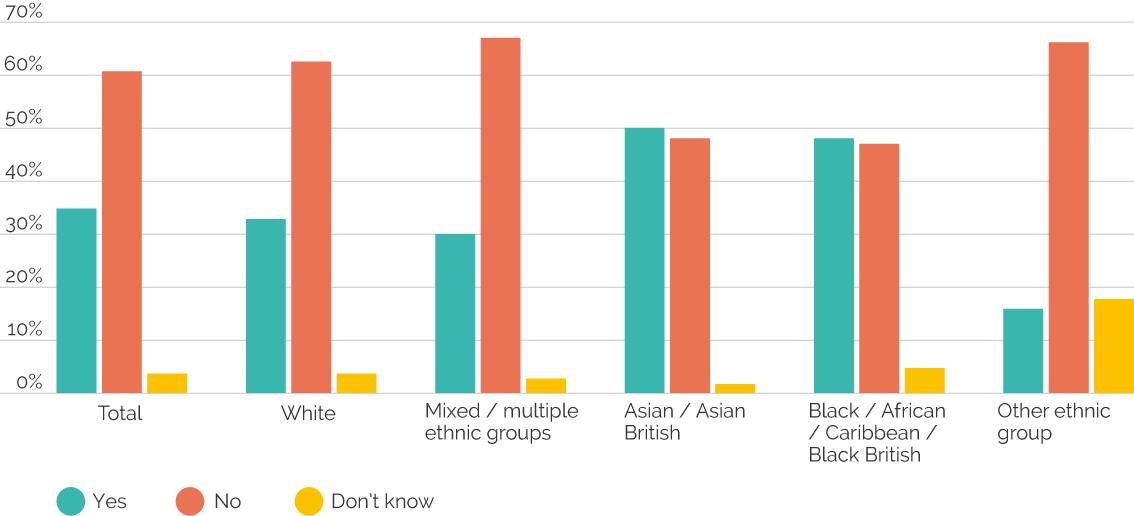The relationship between energy justice and ethnic minorities is under-explored in UK energy poverty research.
Current research on energy poverty in the UK has largely failed to explore the relationship between end-use energy justice and ethnic minorities.”
It is widely acknowledged that people across the UK will face a harsh winter this year, due to rising energy costs and the cost-of-living crisis. An estimated 9 million households will be unable to secure the level of energy needed for their home – a situation commonly termed as energy poverty. The UK is also home to more than 8 million people who identify as belonging to an ethnic minority group; in England, around 17.7% of non-white ethnic minority households are in energy poverty, in contrast to the average of 10.3% and 9.3% of White households. Nevertheless, discussions of energy poverty rarely centre on the intersections of energy and ethnicity. Moreover, current research on energy poverty in the UK has largely failed to explore the relationship between end-use energy justice and ethnic minorities. New findings from our research paper, co-authored with Stefan Bouzarovski and Mari Martiskainen address this gap and open a conversation on the need for ambitious research agenda that explores the relationship between end-use energy justice and ethnic minorities.
Energy market access, procedural injustices and the current crisis
Our research suggests that energy poverty is likely to have increased among ethnic minorities amidst the current energy crisis. In part, this is due to the UK’s fragmented energy market, resulting in unequal access between different groups. For example, analysis of Ethnicity Boost data showed the use of a standard variable gas tariff – typically less affordable than fixed rate tariffs – higher in ethnic minority population. A significantly larger-than-average percentage (33%) of Asian and Asian British groups, and 40% of ‘Other’ ethnic groups utilised standard variable gas tariffs compared with 22% of White respondents. Similarly, for electricity, a larger percentage of mixed ethnic minority respondents used a standard variable tariff, compared to both White and the overall figure (24%), although 39% of Black, African, Caribbean, and Black British groups were on fixed rate tariffs.
The energy price rise has exposed more than 4 million prepaid meter energy customers, many of whom are already saddled with energy debt or are on low incomes, to severe vulnerability. Prepaid users are unable to split their payments over the course of the year and are at risk of having their meters temporarily disconnected when they run out of credit. Our analysis shows that ethnic minorities, particularly Asian and Black ethnic groups are most at risk from price spikes. Even prior to the energy crisis, a disproportionately high percentage (50%) of these groups reported to having their pre-payment meters temporarily disconnected as their household ran out of credit. In comparison, only 30% of the White respondents ever had their meter disconnected (Figure 1). Therefore, it is important that energy interventions account for the diversity and complexity of vulnerability of ethnic minority groups.

Overall, the prevalence of less affordable variable tariffs was more common among ethnic minority respondents, pointing to a potential energy vulnerability pathway. While tariffs and meter types are one of the multiple parameters where energy access inequality is visible, there are other factors that demonstrate the energy vulnerability of ethnic minorities. For instance, our paper shows that ethnic minorities are less reliant on large energy suppliers (defined by Ofgem as suppliers whose market share exceeds 5% in at least one fuel) than the general population. In the context of the energy crisis, this may place ethnic minority consumers at greater risk of supplier default and increased energy prices.
Vulnerability to energy poverty among ethnic minority groups is a function of multiple intersecting factors, including geographical location. Scotland and Northern Ireland have higher rates of energy poverty than England, and there is a clear North-South divide within England itself – income, disability, gender and housing tenure type. For example, 41% of those born outside the UK rely on the private rented sector for housing, a sector where fuel poverty is at its highest levels and housing can be of poor quality. In addition, people from certain ethnic minority communities are also particularly vulnerable to overcrowding, especially in London and the Midlands.
Policy implications and future research questions
Multiple intersecting factors such as geographical location, income, disability, gender and tenure type determine the vulnerability and experience of energy poverty. However, a lack of research and good quality ethnic minority specific data limits the scope of this paper. Though our article opens a pressing conversation on energy poverty and ethnicity in the UK, an ambitious research agenda is required to move towards a more equitable and inclusive energy policy.
Banner photo credit: Clay Banks on Unsplash



